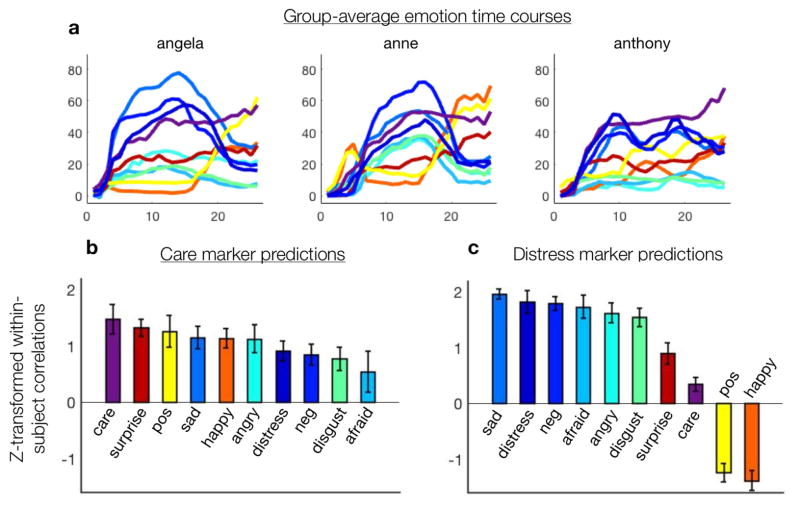Figure 5.
Relation of empathic care and distress to eight other feelings. a) Group-average continuous time courses (in seconds) of feelings provided by an independent behavioral sample (N = 200), shown for three sample biographies. These time courses were mapped onto neuroimaging data from the fMRI sample (N = 66). b) To assess the specificity of the empathic care and distress brain markers, we tested to what extent each marker correlated with the group-average time course of each feeling. This approach tracks the time course of feelings but not the absolute intensity of feelings. The care marker tracked empathic care significantly more strongly than any other emotion, and it was positively correlated with a range of positively and negatively valenced emotions. c) The distress marker was positively correlated with a cluster of negative emotions, negatively correlated with the two positive emotions, and had a relatively weak relationship with care and surprise, the two emotions with ambiguous valence.

